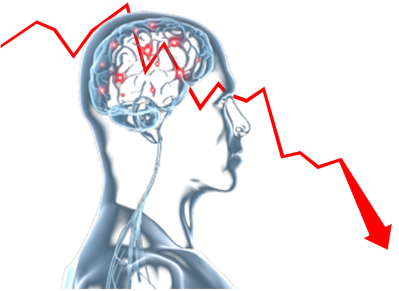Why Risk is Personal: The Neuroscience Behind Safety Perception at Work

By Rose Byass
We don’t see risk as it is — we see it as we are.”
In the world of workplace safety, we're often taught to rely on checklists, hazard registers, and procedures — systems built on the assumption that all employees perceive risk in the same way. But what if they don’t? What if one worker steps back from danger instinctively while another walks straight into it — not because they’re careless, but because their brain processes risk differently? Welcome to the world of neurosafety — where psychology, brain science, and human variability collide with policy and compliance.
The Brain’s Risk Filter
Our brains are hardwired to scan for danger, but not all brains assess it equally. Risk perception is not a purely rational process — it’s filtered through:
- The amygdala, which flags potential threats
- The hippocampus, which recalls past risk experiences
- The prefrontal cortex, which regulates decision-making and impulse control
Together, these brain regions influence how we respond to uncertainty, rules, and hazards. But how these systems operate is shaped long before we enter the workforce — by our upbringing, life experience, trauma, cultural background, and personality. Someone raised in a volatile or overly controlled environment may either:
- Become hyper-alert, reacting to low-level threats with high anxiety, or
- Become desensitised to chronic risk and under-respond to danger
Why “Common Sense Safety” Is a Myth
We hear it all the time: “It’s common sense.”
But common sense is shaped by common experience — and in today’s workplaces, that’s rare. In safety-critical environments like mining, construction, transport, and healthcare, employees bring vastly different perceptions of:
- What constitutes risk
- When something is worth reporting
- How assertive they feel about speaking up
If one person grew up in a household where mistakes were punished, they may hide incidents. Another may have served in the military and perceive high-risk environments as “normal.” Leaders who overlook this psychological nuance risk creating safety systems that look compliant but fail under pressure.
Real-World Impacts of Risk Perception Bias
When leaders fail to account for how people perceive risk differently, we see:
- Workers walking past hazards without reporting them
- Teams ignoring SOPs because they’ve “always done it this way”
- Supervisors failing to follow up on non-compliance due to discomfort with confrontation
- Mental fatigue mislabelled as laziness or attitude problems
These aren’t compliance failures — they’re cognitive mismatches between system expectations and human processing.
Building Systems That Match the Human Brain
To create safer workplaces, we need more than rules. We need systems designed for real brains, in real conditions. Here’s where leadership comes in.
What Leaders Can Do:
- Understand that risk is subjective
Start safety conversations with questions like:
“What could someone miss here?” or “Where might perception differ in this task?” - Train leaders in psychological safety and cognitive bias
Give them the tools to recognise fear-based disengagement or under-reporting, not just non-compliance. - Normalise different reactions to the same risk
Create space for people to raise concerns without shame — especially if they see risk differently. - Rebuild policies through a neuroscience lens
Use simple language, visual cues, and scenario-based learning to align with how people actually absorb information under stress.
A New Era of Safety: Perception-Informed, People-Driven
If we want to create safer, stronger, and more productive teams, we must stop treating humans like machines and start designing systems that account for our mental wiring. That’s what we do at Robust Leaders — embed psychological safety and brain-aligned leadership into WHS systems, training, and team culture. Because the future of safety isn’t just compliance — it’s clarity, communication, and human insight.
💬 Let’s Talk
If you’re curious about how risk perception and safety culture play out in your organisation, let’s talk.
📩 Book a free 30-minute discovery session:
🌐 Learn more: www.robustleaders.com.au#Neurosafety #WHS #PsychologicalSafety #Leadership #RiskCulture #RobustLeaders #WorkplaceWellbeing


